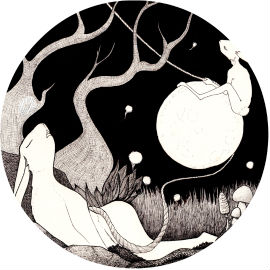I went for a lovely ambling walk in the city of York today, with the charming, ebullient and very engaging local historian, Chris Kelly.
I have to make notes for the exam he threatened, but in the meantime, here are some of the very wonderful things I discovered with his assistance (OK, look, I didn’t discover them at all. Just listened, and tried to remember).
- There’s a little laneway in the City of York, quite near Minster, whose name is Ogleforth. Not because it’s where you can get a good eyeful, but because ogle comes from an early Nordic word meaning ‘owl’. The full name of the street is thought to mean ‘the ford haunted by owls’.

Ogleforth Lane, York
- My favourite house on Ogleforth Lane is called ‘The Dutch house’. It is believed to be the oldest existing brick house in York. It was built in the mid-1600s either by, or based on the imported technical wisdom of, Dutch brickmakers and architects. Dutch immigrants to York were encouraged during this period, and were a prominent sector of the city’s population. One reason the Dutch seem to have been encouraged to emigrate was because their more pragmatic, Calvinist Protestantism would, it was hoped, dilute the more radical, fiery local version. The building has a distinctive Dutch shape, which stands out in this city that showcases British architecture from the 12th to the 20th centuries, with its pretty curved gables, small windows and warm red bricks.

The Dutch House, York. Built around 1648 and now a privately operated, self-catering holiday letting.
- Grape Lane is the modernised, euphemised name of what was formerly ‘Gropecunt Lane’ – the street where ladies of financially elastic moral character plied their trade. There are, or were, once streets with this name scattered through England, but they’ve mostly been renamed something that sounds slightly similar, such as Grove, Grope or Grape.
- In York, “every bar is a gate, every gate is a street, and every street has a pub”.The use of the word ‘bar’ to describe a city gate, is a modification of the French word barre or barrière, meaning barrier. The four major gatehouses of York are Bootham Bar (almost on the same site as the Roman porta principalis dextra, or ‘big gate on the left’), Monk Bar (the site of the Roman porta decumana: the gate opening on a road that passes the principia), Walmgate Bar and Micklegate Bar. There are also two smaller bars: Fishergate and Victoria.
The use of the term ‘gate’ to describe a street comes from the Viking word gata, meaning street. The hotel where I’m staying is just near Walmgate, which leads onto Fossgate, then Colliergate before rounding a bend and becoming Stonegate, which ends at a T-intersection with Spurriergate …
There are currently about 180 pubs in the City of York. 170 of which, I’ve decided, either claim to be haunted and/or are called either The Red Lion or The Five Lions …
- The Five lions, just by the by, appear on the coat of arms of the City of York, prettily arranged on St George’s Cross. The use of St George’s Cross signals the highly royalist history of the city. (York sided with the king during the Civil War, which is one reason it’s famous wall is still intact – after the war was over, funds were supplied to the city to repair damage incurred during the fighting). One story that explains the use of the five lions is that when William the Conqueror besieged and defeated the city in 1068 (part of the infamous ‘harrying’ or ‘harrowing’ of the North) only five York soldiers survived. Hence the coat of arms: five lions for five soldiers. According to Chris, the central lion’s name – or the name of the survivor he represents – was Sir Percy.

The Five Lions (pub and, hanging outside the pub, coat of arms)
- This Roman pillar – or the parts of it anyway – were discovered lying under the foundations of the south transept of York Minster during reparation work. It was subsequently raised, in 1971, to mark and celebrate the 1900th anniversary of the founding of York (or Eboracum, as it was then named) in 71 AD. Eboracum was the northernmost Roman settlement in Britain – the military garrison from which the Romans defended Brittania Inferior. It was once one of 16 columns that supported the Praetorium of the Roman garrison city. [Praetorium from the Latin Praetor = leader. A site – anything from a tent on the battlefield to a large, permanent structure – in which military leaders met and, sometimes, lived.]Have a close look at the column. Tell me, if you’re a student of Roman architecture, if you notice anything … odd.

Praetorium column
Yes, it’s true. Your eyes are not deceiving you. The column has been reconstructed upside down. An inverted Roman column. Are York Civic Trust having a bit of a laugh? Were they standing on their heads at the time? I suspect it’s just human error. Oops.
- What a girl most needs after a long, cold, brisk walk in the city of York is a really good, really warm and very delicious pot of tea. Which I found at The Hairy Fig.
What I also found at The Hairy Fig was delicious food, smiling faces and an amazing selection of things-I-want-to-take-home, including a range of aged balsamics and oils, and falvoured spirits. Raspberry gin, bramble gin, damson and sloe gin. Oh, so good. So very, very good. And warmed me right up! The Hairy Fig has two side-by-side shopfronts: the cafe is out the back of number 38 Fossgate. As well as having an impressively delicious menu of gourmet treats, the two shopfronts sell an excellent range of fresh produce, specialty teas, coffees, chocolates, sweets, and so on.



No Comments